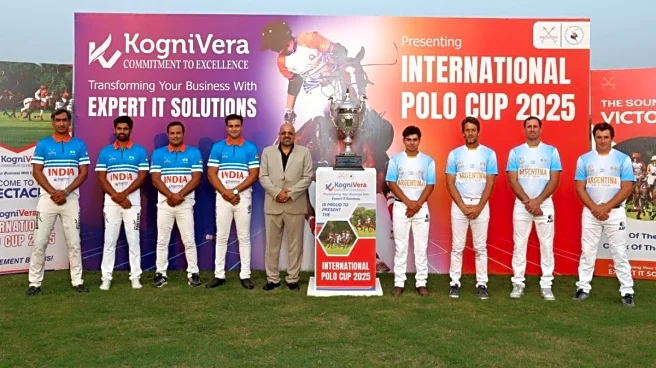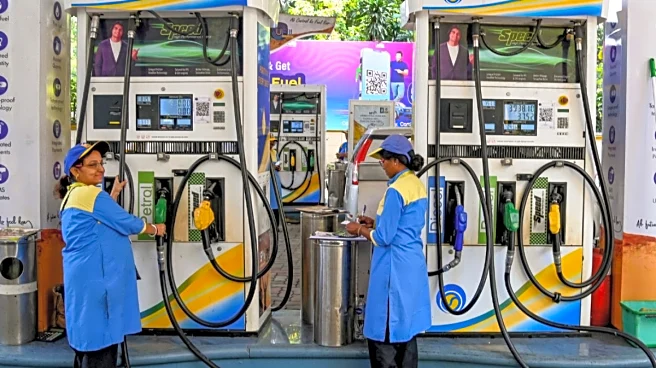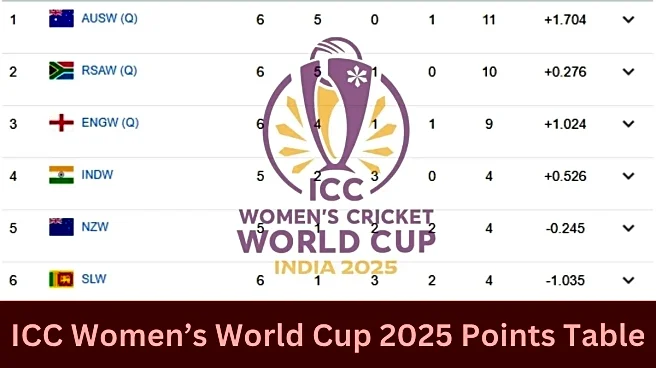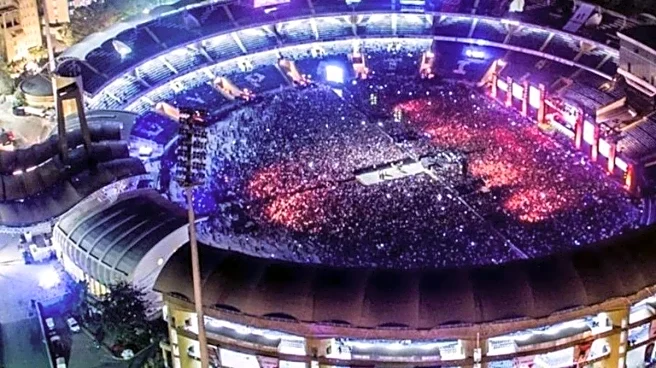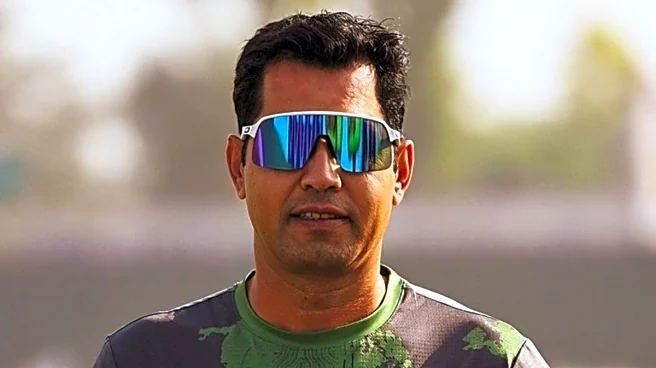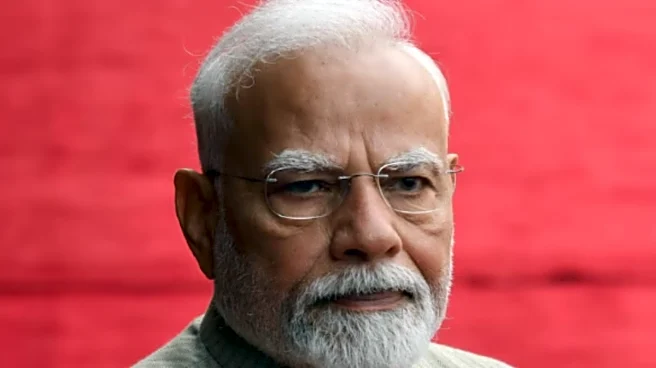At the Army Equestrian Centre in Delhi Cantonment, a shining trophy sat centre stage on Wednesday evening. Around it gathered players, dignitaries, and journalists – all witnessing the launch of something
that hadn’t happened here in five years. International polo was coming back to the capital.
The KogniVera International Polo Cup, scheduled for October 25 at the Jaipur Polo Ground in Delhi, marks the return of high-level polo to the NCR after a long hiatus. India will face Argentina, the undisputed global superpower of the sport, in a 16-goal match – the highest handicap level India can currently field.
“This is the Indian national team which is being fielded against a very strong invitational team from Argentina,” Col. Vikramjeet Singh Kahlon, VSM, Secretary General of the Indian Polo Association, told News18 Sports.
The Argentine side comprises professional players who have been regularly competing in India and are well-versed in local conditions. “Since Argentina is a powerhouse of polo, we thought that since we are restarting international polo in Delhi after a long spell of five years, why not bring the best – while keeping them on equal footing,” said Col. Kahlon.
Indian Polo: A Storied History
The match carries weight beyond sport. Polo originated in India over two millennia ago in Manipur, where it was known as Sagol Kangjei. The British formalised it in the 19th century and took it to the world, including Argentina. Now, in a sense, the sport has come full circle.
Polo’s history in India is inseparable from royalty and the military. In the modern era, the Indian Polo Association was formed in 1892. By the 1930s, Indian teams – especially Jaipur – dominated the world stage. From the early 1990s onward, corporate sponsorship and private patrons began to revive the game.
“In the early 1900s, the sport was primarily played by the armed forces, or because it was very expensive,” Col. Kahlon explained. “But post the 90s, from the early 90s, a lot of corporates started sponsoring polo. A lot of private players started owning horses, playing the sport at club level. So, the sport sort of grew from the early 90s till 2000s, where now every team has got one to two professional players. So Polo has become extremely competitive now.
India’s Place in a Global Game
Despite that progress, India has struggled to keep pace internationally. The country competes in Zone E for World Cup qualifiers, which includes Asia, Africa, and Australia. South Africa, Pakistan, and Australia are all formidable competitors in this zone. While India qualified for the World Cup finals in 2017, the team missed out in the 2022 edition.
Argentina, by contrast, is unchallenged. The South American nation has won the World Polo Championship five times, and currently holds eight of the top nine player rankings globally. Argentine polo is built on a culture of horsemanship, elite breeding programs for polo ponies, and unmatched skill development. “Argentina is a powerhouse of polo,” Col. Kahlon noted matter-of-factly.
For India, facing Argentina is both a test and an opportunity. The Indian team for the KogniVera Cup includes Simran Shergill, Shamsheer Ali, Sawai Padmanabh Singh, and Siddhant Sharma – players who represent the best of the country’s current talent. Padmanabh Singh, the 27-year-old Maharaja of Jaipur and captain of the Jaipur Polo Team, has been instrumental in reviving the sport’s visibility in India.
The Argentine side features Juan Augustin Garcia Grossi, Salvador Jauretche, Matias Bautista Espasandin, and Nicolas Jorge Corti Maderna – all seasoned professionals.
The Vision Problem: Polo Needs to Be Seen
One of the issues with Polo in India is visibility. Kamlesh Sharma, Managing Director and CEO of KogniVera IT Solutions, the event’s title sponsor, was candid about it. “The first time I saw polo, it was like I was thrilled and I thought this is the game that people should watch,” he said. “But the unfortunate part is this is not visible in India”.
Sharma believes the sport’s future hinges on exposure.”We wanted to make sure or we wanted to work on making this visible first. And if it’s visible, then definitely people will come and start playing polo, start watching polo”.
Cost is probably one of the major barriers for Polo in India – horses, equipment, grounds. But Sharma opined, “Watching, there is no cost in that. And if you are a cricket lover, everybody is not playing cricket, right? Eighty percent of Indians don’t play cricket. Only 20 percent play cricket. The same way, 80 percent of people can watch, enjoy, love this game.”
He even hinted at ambitions for an IPL-style league. “It’s going to be very soon. Let’s see,” he said with a smile.
Arena Polo: The T20 Solution
Col. Kahlon was equally optimistic about the future. But his focus is on arena polo – a faster, more compact format played indoors or in smaller outdoor arenas. “We are really working aggressively with popularising arena polo, which is the T20 equivalent of polo, which is easier to play. You need smaller space, lesser number of horses”.
Arena polo requires far less infrastructure than traditional field polo, which demands about 20 to 25 acres of land – equivalent to nine football fields. “So therefore, in my personal opinion, I think to develop more polo fields with the kind of pressure, population pressure and the pressure on the land is going to be difficult,” Col. Kahlon acknowledged. “So, our endeavour as an association is to qualitatively improve the grounds which we already have and popularise arena polo, which is far easier to create”.
The format is spectator-friendly. “You can watch it under lights. You can enjoy your popcorn and soft drinks in a stadium, like you’re watching a football match or a basketball game,” Col. Kahlon said. “Good, fast game of arena polo at the same time”.
Arena polo clubs have sprung up across India – in Chennai, Hyderabad, Ahmedabad, Bhavnagar, Chandigarh, Delhi, and Jaipur. The IPA is pushing more arena polo tournaments into the calendar to grow the sport’s reach.
When Heritage Meets the World’s Best
For now, the focus is on October 25. The match at the Jaipur Polo Ground will be the first time in five years that Delhi has hosted an international polo fixture at this level. The IPA sees it as a stepping stone. India is preparing for the next round of World Championship qualifiers in 2026. The national coach, Kannavjeet Singh Sandhu, is working with the team, and Col. Kahlon expressed cautious optimism. “We’re quite hopeful that we should qualify for the finals. And once you reach the finals, it’s anybody’s game”.
The trophy now sits ready. The teams are prepared. And for one afternoon in late October, the sport that began in the hills of Manipur will return to the capital to face the nation that has perfected it.
